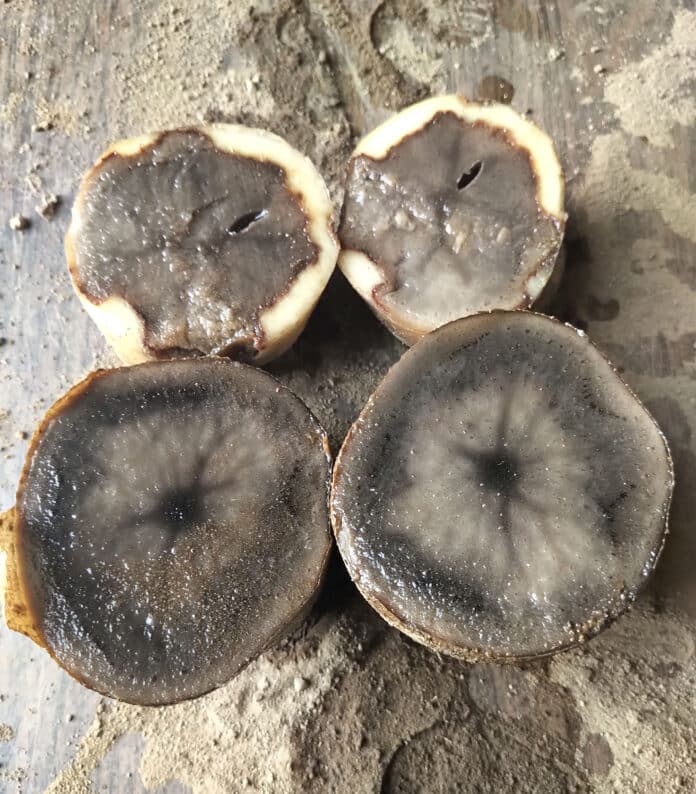Tips on how to manage a potato crop in risk during storage.
After digging the potato crop, the next challenge for growers is to limit the loss of tuber quality in storage. This can be difficult if quality has been compromised by diseases, excessive soil moisture, frost or mechanical bruising in the field or at harvest.
The most common diseases causing problems in storage are bacterial soft rot (blackleg, Dickeya) late blight, pink rot and leak. If more than two per cent of the tubers show signs of disease, or two per cent of the crop is frost damaged, the common storage rules should be bypassed to save a crop at risk. Bypassing common storage rules will bring different problems: tuber weight loss, pressure bruising and the build-up of reducing sugars. These problems must be considered secondary to the potential losses from tuber decay.
The following is a list of guidelines to help growers manage a crop at risk in storage.
- If test digs indicate that two per cent of the tubers are rotting, delay digging to allow the damaged and diseased tubers to rot. Grade tubers carefully and market them straight from the field, if possible.
- Leave rotten or frozen potatoes in the field. This will require additional people on the digger. Slow down and provide sufficient light so that the workers can do to do their job.
- Prepare the storage. Ensure it is at the proper temperature, with the air delivery and control systems in good order.
- Provide an adequate air flow rate (25 cubic feet per minute per ton) in all areas of the storage. Good air movement is essential for problem potatoes.
- Don’t try to store compromised potatoes unless the pulp temperature can be brought down and maintained below 10 C throughout the pile. If tubers at the top of the pile aren’t cooled properly, decay will start there. The entire pile may melt down and be lost.
- Cure the tubers with air at the lowest possible temperature, 10 C is the target, or eliminate the curing period altogether. Problem potatoes are usually infected with decay pathogens. Cool and dry the pile to the final storage temperature as quickly as possible.
- Don’t humidify. The potatoes are probably too wet already.
- Run funs continuously until the crop is dry and decay is under control. Recirculate air through the potatoes in storage even when outside air is not being introduced.
- Keep the pile as shallow as possible. This promotes air movement and allows the removal of potatoes from hot spots. Rotting tubers and dirt sometimes form barriers to air movement.
- Monitor the storage daily. Thermometers placed at various depths in the pile provide a good indication of the average temperature. Infrared guns are helpful to locate hot spots before they begin to sink and spread.
- Do not expose cold potatoes to warm outside air. A layer of free water will condense on the tubers. This can cause suffocation and favours soft rot. Use air no warmer than 3 C above the desired tuber temperature.
Remember, one of the most serious errors is to harvest potatoes from low, poorly drained areas of a field where water may have accumulated.
Related Articles
Pythium Leak, A Serious Yield Robber
Updated Checklist for a Successful Harvest of the Storage Crop








